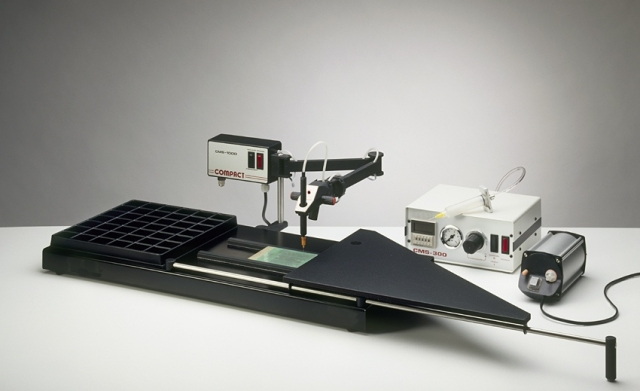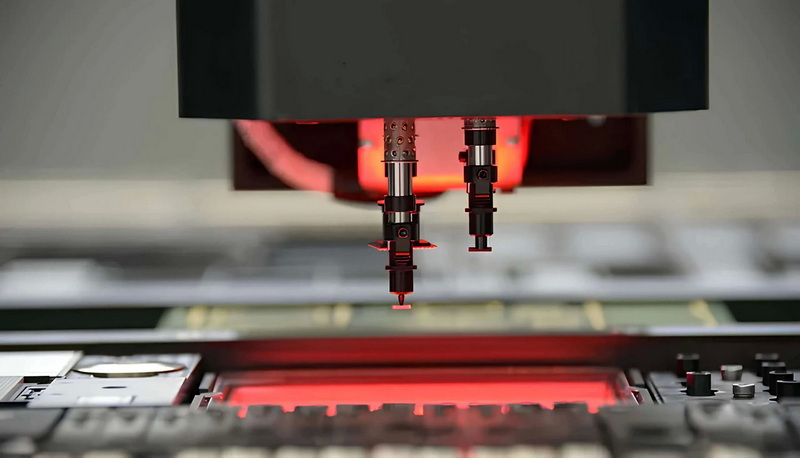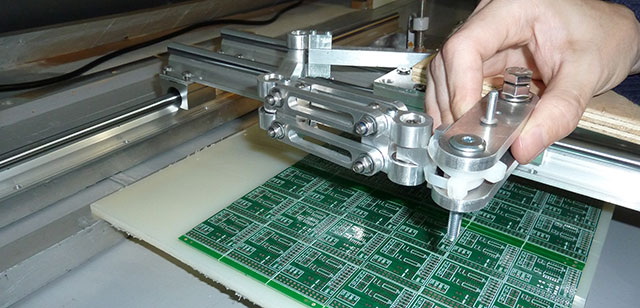Content Menu
● Understanding SMD Manual Pick and Place Machines
● The Functionality of SMD Manual Pick and Place Machines
● Benefits of Using SMD Manual Pick and Place Machines
● The Cost of SMD Manual Pick and Place Machines
● Evaluating the Return on Investment (ROI)
● Comparing Manual and Automated Pick and Place Machines
● Real-World Applications of SMD Manual Pick and Place Machines
● Conclusion
● FAQ
>> 1. What is the average price of SMD manual pick and place machines?
>> 2. Are manual pick and place machines suitable for beginners?
>> 3. How do I choose the right manual pick and place machine for my needs?
>> 4. Can I use a manual pick and place machine for high-volume production?
>> 5. What are the maintenance requirements for SMD manual pick and place machines?
In the world of electronics manufacturing, the efficiency and precision of assembling printed circuit boards (PCBs) are paramount. One of the key components in this process is the pick and place machine, particularly the SMD (Surface Mount Device) manual pick and place machines. These machines have gained popularity among small to medium-sized enterprises and hobbyists due to their affordability and ease of use. In this article, we will explore the worthiness of investing in SMD manual pick and place machines, focusing on their benefits, costs, and overall value in the electronics assembly process.

Understanding SMD Manual Pick and Place Machines
SMD manual pick and place machines are designed to facilitate the assembly of surface mount components onto PCBs. Unlike their automated counterparts, manual machines require human intervention for the placement of components. This can be particularly advantageous for small production runs, prototypes, or for those who are just starting in the electronics field.
The Functionality of SMD Manual Pick and Place Machines
These machines typically consist of a platform where the PCB is placed, a mechanism for picking up components, and a way to accurately place them on the PCB. The operator uses a combination of visual alignment and manual controls to position the components correctly. The simplicity of operation makes these machines accessible to individuals without extensive training.
Benefits of Using SMD Manual Pick and Place Machines
1. Cost-Effectiveness: One of the most significant advantages of SMD manual pick and place machines is their price. Compared to fully automated machines, which can cost tens of thousands of dollars, manual machines are much more affordable. This makes them an attractive option for startups and hobbyists who may not have the budget for high-end equipment.
2. Flexibility: Manual machines offer a level of flexibility that automated machines cannot match. Operators can easily switch between different component types and sizes without the need for extensive reconfiguration. This is particularly useful for small batch production or prototyping, where different designs may be tested frequently.
3. Ease of Use: The learning curve for operating a manual pick and place machine is relatively low. New users can quickly become proficient, allowing for faster setup times and reduced training costs. This accessibility encourages more individuals to engage in electronics assembly.
4. Quality Control: With manual machines, operators have direct control over the placement of components. This hands-on approach can lead to higher quality assembly, as operators can immediately address any issues that arise during the process. The ability to visually inspect each component placement can significantly reduce errors.
5. Space Efficiency: Manual pick and place machines are generally smaller and more compact than their automated counterparts. This makes them ideal for small workshops or home-based electronics labs where space is at a premium.
The Cost of SMD Manual Pick and Place Machines
When considering the investment in an SMD manual pick and place machine, it is essential to evaluate the price range. The cost of these machines can vary significantly based on features, brand, and capabilities. Generally, you can find machines priced anywhere from a few hundred to several thousand dollars.
Factors that influence the price include:
- Build Quality: Higher-quality machines tend to be more durable and reliable, which can justify a higher price.
- Features: Some machines come with additional features such as vacuum pick-up systems, adjustable speed settings, and enhanced alignment tools, which can increase the cost.
- Brand Reputation: Established brands may charge more due to their reputation for quality and customer support.

Evaluating the Return on Investment (ROI)
To determine if an SMD manual pick and place machine is worth the investment, it is crucial to evaluate the potential return on investment. This involves considering the following factors:
1. Production Volume: If you are producing PCBs in small quantities, a manual machine can be a cost-effective solution. However, for larger production runs, the time taken for manual placement may not be efficient compared to automated machines.
2. Labor Costs: The cost of labor is another critical factor. If you have skilled workers who can operate the machine efficiently, the overall cost of production may decrease, making the investment worthwhile.
3. Quality Requirements: If your products require high precision and quality, the ability to manually inspect and place components can lead to better outcomes, justifying the investment in a manual machine.
4. Market Demand: Understanding the demand for your products can help you assess whether the investment in a pick and place machine will pay off in the long run. If you anticipate growth in your production needs, investing in a manual machine may be a strategic move.
Comparing Manual and Automated Pick and Place Machines
While SMD manual pick and place machines offer numerous advantages, it is essential to compare them with automated machines to understand their place in the market.
- Speed: Automated machines are significantly faster than manual machines, making them suitable for high-volume production. If speed is a critical factor for your business, an automated solution may be necessary.
- Initial Investment: Automated machines require a more substantial initial investment, which may not be feasible for smaller operations. Manual machines provide a lower barrier to entry.
- Complexity: Automated machines often come with complex software and require more technical knowledge to operate and maintain. Manual machines are straightforward and user-friendly.
- Scalability: As production needs grow, businesses may find that transitioning to automated machines is necessary. However, starting with a manual machine allows for gradual scaling without significant upfront costs.
Real-World Applications of SMD Manual Pick and Place Machines
SMD manual pick and place machines are widely used in various applications, including:
- Prototyping: Engineers and designers often use manual machines to assemble prototypes quickly. This allows for rapid testing and iteration of designs.
- Small Batch Production: Businesses that produce limited quantities of specialized electronics benefit from the flexibility and cost-effectiveness of manual machines.
- Hobbyist Projects: Many electronics enthusiasts and hobbyists use manual pick and place machines for personal projects, allowing them to create custom PCBs without the need for expensive equipment.
Conclusion
In conclusion, SMD manual pick and place machines can be a worthwhile investment for many individuals and businesses involved in electronics assembly. Their affordability, flexibility, and ease of use make them an attractive option for small-scale production and prototyping. While they may not match the speed and efficiency of automated machines, their benefits often outweigh the drawbacks for those who require a cost-effective solution.
When considering the investment, it is essential to evaluate your specific needs, production volume, and quality requirements. By doing so, you can make an informed decision that aligns with your business goals and budget.

FAQ
1. What is the average price of SMD manual pick and place machines?
The price of SMD manual pick and place machines can range from a few hundred to several thousand dollars, depending on the features and brand.
2. Are manual pick and place machines suitable for beginners?
Yes, manual pick and place machines are user-friendly and have a low learning curve, making them suitable for beginners in electronics assembly.
3. How do I choose the right manual pick and place machine for my needs?
Consider factors such as your budget, the types of components you will be using, and the volume of production when choosing a manual pick and place machine.
4. Can I use a manual pick and place machine for high-volume production?
While manual machines can be used for high-volume production, they are generally slower than automated machines. For large-scale production, an automated solution may be more efficient.
5. What are the maintenance requirements for SMD manual pick and place machines?
Maintenance typically involves regular cleaning, checking for wear and tear, and ensuring that all components are functioning correctly. Following the manufacturer's guidelines will help keep the machine in good condition.




















